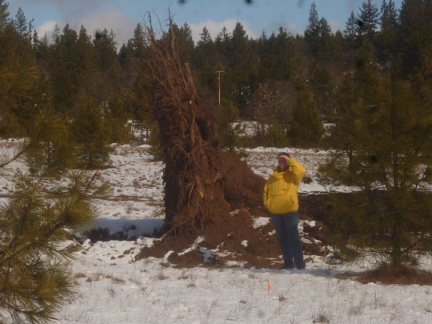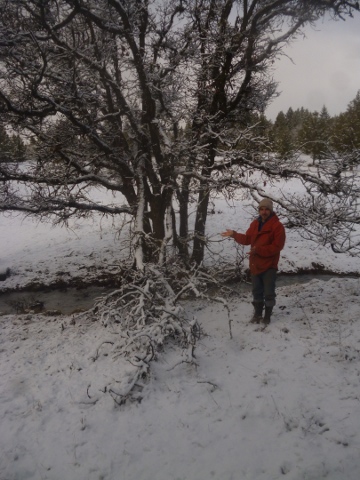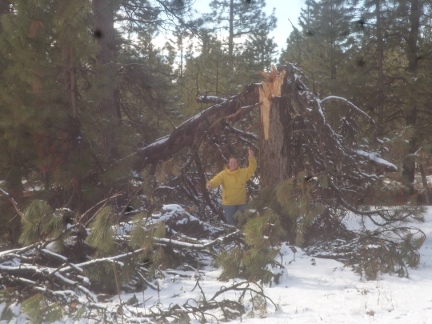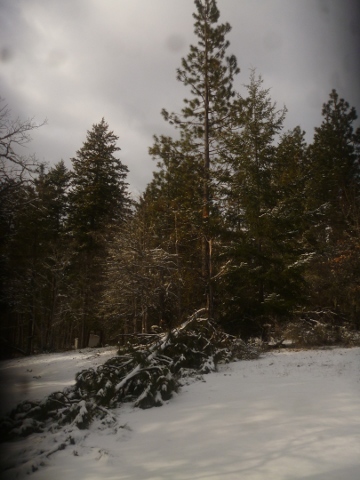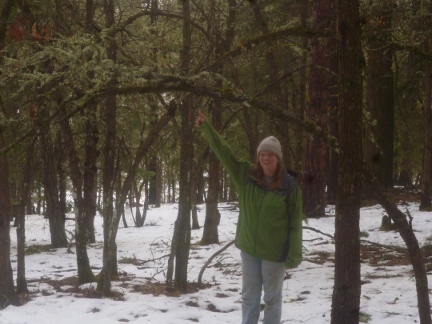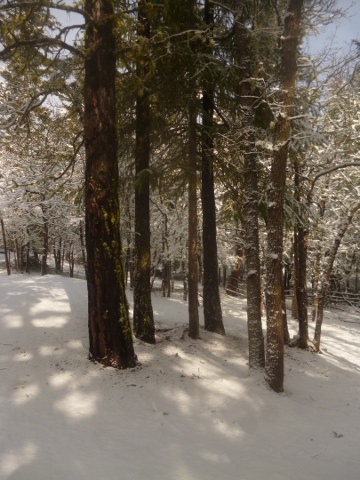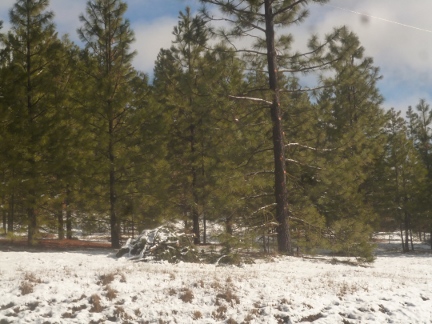Sourcing Biomass
A healthy forest is a living system, and death and injury are inevitable parts of life. Our forests evolved in conjunction with frequent forest fires that cleared out dead wood and low hanging branches. Now that forest fires are suppressed, an unattended forest steadily becomes cluttered with dead biomass, material which will continue to accumulate until a catastrophic forest fire brings death and injury to not only the forest, but also to the living beings that make it their home. In Windward's forest, a significant amount of tree death and injury happens each winter because of the combined impact of ice storms and heavy winds. Freezing rain can make trees top-heavy to the point where the wind can push them over to their deaths. This winter's icy rain took the largest tree we had, and laid it over on its side to die.
Sometimes the damage is partial as the heavy ice snaps off large branches.
Sometimes the heavy ice finds a weakness in the truck and the tree snaps at the base.
Or part of the upper tree is broken off.
Sometimes a tree will bend under the weight and never recover.
All of this forest waste will need to be cleaned up and disposed of. The traditional way is to pile it up and burn it. B2M will enable us to convert forest waste such as this into the heat, fuel and power needed to keep a community warm and thriving through the cold winter months. Thinning the ForestThe important and ongoing custodial work described above is done each year, there's needful forestry work that will generate considerable additional woody biomass, work such as thinning and limbing.B2M is founded on the way that trees function as self-replicating solar collectors. In an untended forest, the growth of trees proceeds through random propagation of seedling which then engage in a struggle for resources as they grow and content for limited resources such as water, sunshine and minerals. This process of producing an overabundance of seedlings is no different from the way a gardener will plant more seeds than could possibly grown in their garden. The conscientous gardener will then thin out the resulting plants to select those that will make the best use of garden space and resources. In a similar manner, a forest steward will thin out the trees, selecting the strongest, best-located young trees and take out the rest. If the trees are too far apart, they become short and stubby, and don't produce the tall, straight timber that is needed to build with. If they're too close together, their growth is stunted. From a productivity perspective, it's better to have one large vigorous tree growing in a given space‒a tree that can be used to produce housing and furniture‒than to have that same space produce a few spindly trees that are only good for firewood.
Another source for additional biomass involves removing the lower limbs from trees. This is a beneficial practice because it opens up the understory for other plants to grow, thereby increasing the biodiversity of the forest.
The "take away" message here is that a substantial amount of woody biomass can be harvested from a living forest without disrupting the natural cycle of forest life. Moreover, significant additional biomass can be gleaned by exercising good stewardship. The art lies in designing community support structures and systems which can function within the annual solar energy budget that can be captured by a well managed forest. |
